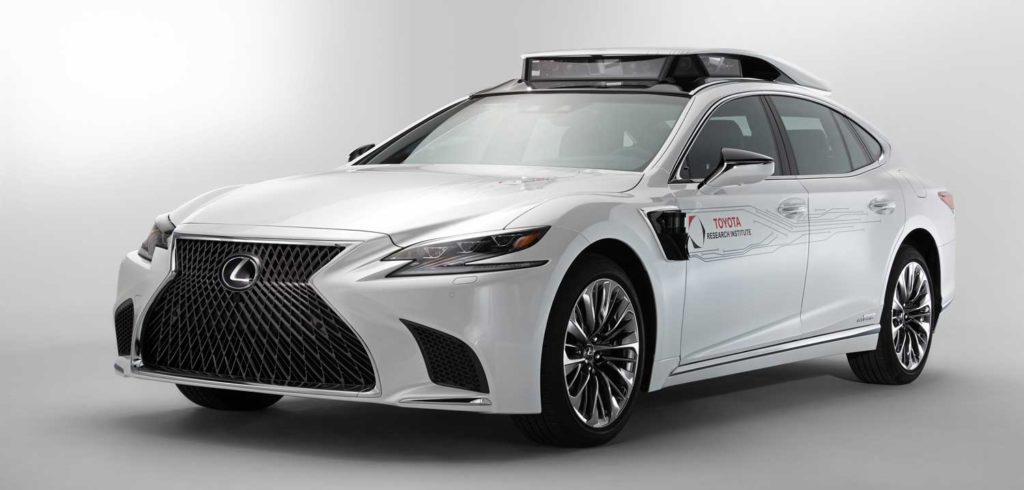At CES, taking place in Las Vegas this week, the Toyota Research Institute will launch its next-generation automated driving test vehicle, the TRI-P4.
Based on the all-new fifth-generation Lexus LS flagship sedan, the P4 will be used in TRI’s two-track Guardian and Chauffeur automated driving system development, and is expected to join the automated test fleet in the spring.
“Our Chauffeur development is focused on full autonomy, where the human is essentially removed from the driving equation, either completely in all environments, or within a restricted driving domain,” said Ryan Eustice, senior vice president of automated driving at TRI. “Guardian, on the other hand, is being designed to amplify human performance behind the wheel, not replace it. The introduction of the new P4 platform will help us accelerate the development of both tracks when it joins our fleet.”
P4 benefits from two additional cameras that improve situational awareness on the sides and two new imaging sensors – one facing forward and one toward the rear – specifically designed for autonomous vehicles. The imaging sensors feature new chip technology with high dynamic range. The radar system has been optimized to improve the field of view, especially for close range detection around the vehicle perimeter. The lidar sensing system with eight scanning heads carries over from the previous test model, Platform 3.0, and morphs into the new vehicle design.
According to TRI, the new research vehicle is much smarter than its predecessor. With greater computing power, its systems can operate more machine learning algorithms in parallel for faster learning. It can process sensor inputs faster and react more quickly to the surrounding environment. All computing system power is now drawn from the vehicle’s hybrid battery, with the 12V battery now serving only as a backup.
The compute box in the trunk, which serves as the ‘brain’ of the automated driving system, has been reimagined. It is now tucked vertically against the rear seat transom, folding down to access the circuitry. This frees up the entire floor of the trunk for hauling cargo.
Calty Design Research in Ann Arbor, Michigan, was responsible for styling. Describing his team’s approach to the project as ‘holistic’, senior lead designer Scott Roller said, “The result is a fluid surface embracing advanced technology loosely inspired by science fiction in the graphic separations between form and function.”
TMNA R&D’s Prototype Development Center in York Township, Michigan, will begin fabricating P4 vehicles from stock models this spring.


